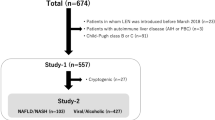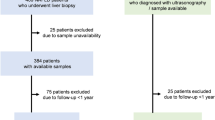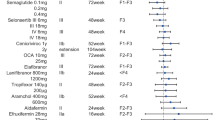Abstract
Alcoholic liver disease (ALD) and its complications is still one of the most frequent causes of death in the Western world. Treatment modalities for both alcoholic steatohepatitis (ASH; the major inflammatory complication of ALD) and alcoholic liver cirrhosis are insufficient. Severe ASH is associated with a high mortality; although glucocorticoid treatment has been reported to improve survival, meta-analyses of clinical trials performed to date have failed to show a convincing benefit of such an approach. Most of the progress in understanding these diseases, especially ASH, has come from studies of cytokines. Various proinflammatory cytokines, such as tumor necrosis factor (TNF), have been proposed to have an important role in the pathophysiology of ALD and its complications. Pilot studies on the use of anti-TNF drugs, such as pentoxifylline or infliximab, in the treatment of ASH have now been performed with various levels of success. The treatment of patients with alcohol-related cirrhosis is mainly symptomatic and no therapies are currently available except orthotopic liver transplantation for end-stage liver disease. Independent of the stage of disease, abstinence from alcohol is the cornerstone of management. New treatment modalities for these diseases are eagerly awaited.
Key Points
-
Severe alcoholic steatohepatitis (ASH) is the major complication of advanced alcoholic liver disease (ALD) and has a high mortality even when treated with corticosteroids
-
Despite the importance of reactive oxygen species in the pathophysiology of ALD and ASH, antioxidants provide no benefit in the treatment of patients with ASH
-
Proinflammatory cytokines are important in the pathophysiology of ASH and ALD and might mediate most of the inflammatory aspects of this disorder
-
New treatment modalities for ASH might involve antagonism of proinflammatory cytokines such as tumor necrosis factor (TNF), by specific anti-TNF antibodies or other treatment strategies that specifically target TNF
-
Propylthiouracil and S-adenosyl methionine might be beneficial for patients with alcoholic cirrhosis, but both agents need to undergo further randomized controlled trials before their use can be recommended
-
Liver transplantation is an effective therapy for patients with advanced alcoholic cirrhosis who have failed to recover after a period of abstinence
This is a preview of subscription content, access via your institution
Access options
Subscribe to this journal
Receive 12 print issues and online access
$209.00 per year
only $17.42 per issue
Buy this article
- Purchase on Springer Link
- Instant access to full article PDF
Prices may be subject to local taxes which are calculated during checkout

Similar content being viewed by others
References
Tome S and Lucey MR (2004) Review article: current management of alcoholic liver disease. Aliment Pharmacol Ther 19: 707–714
Stewart SF and Day CP (2003) The management of alcoholic liver disease. J Hepatol 38 (Suppl 1): S2–S13
Lieber CS et al. (1965) Effects of prolonged ethanol intake: production of fatty liver despite adequate diets. J Clin Invest 44: 1009–1021
Teli MR et al. (1995) The natural history of nonalcoholic fatty liver: a follow-up study. Hepatology 22: 1714–1719
Tsukamoto H and Lu SC (2001) Current concepts in the pathogenesis of alcoholic liver injury. FASEB J 15: 1335–1349
Powell WJ Jr and Klatskin G (1968) Duration of survival in patients with Laennec's cirrhosis. Influence of alcohol withdrawal, and possible effects of recent changes in general management of the disease. Am J Med 44: 406–420
Moyer A et al. (2002) Brief interventions for alcohol problems: a meta-analytic review of controlled investigations in treatment-seeking and non-treatment-seeking populations. Addiction 97: 279–292
Garbutt JC et al. (1999) Pharmacological treatment of alcohol dependence: a review of the evidence. JAMA 281: 1318–1325
Delgrange T et al. (1992) [Effect of acute administration of acamprosate on the risk of encephalopathy and on arterial pressure in patients with alcoholic cirrhosis][French]. Gastroenterol Clin Biol 16: 687–691
Fuller RK et al. (1986) Disulfiram treatment of alcoholism. A Veterans Administration cooperative study. JAMA 256: 1449–1455
Maddrey WC et al. (1978) Corticosteroid therapy of alcoholic hepatitis. Gastroenterology 75: 193–199
Maddrey WC (1988) Alcoholic hepatitis: clinicopathologic features and therapy. Semin Liver Dis 8: 91–102
Orrego H et al. (1987) Prognosis of alcoholic cirrhosis in the presence and absence of alcoholic hepatitis. Gastroenterology 92: 208–214
Chedid A et al. (1991) Prognostic factors in alcoholic liver disease. VA Cooperative Study Group. Am J Gastroenterol 86: 210–216
Carithers RL Jr et al. (1989) Methylprednisolone therapy in patients with severe alcoholic hepatitis. A randomized multicenter trial. Ann Intern Med 110: 685–690
Mathurin P et al. (2002) Corticosteroids improve short-term survival in patients with severe alcoholic hepatitis (AH): individual data analysis of the last three randomized placebo controlled double blind trials of corticosteroids in severe AH. J Hepatol 36: 480–487
McCullough AJ and O'Connor JF (1998) Alcoholic liver disease: proposed recommendations for the American College of Gastroenterology. Am J Gastroenterol 93: 2022–2036
Kulkarni K et al. (2004) The role of the discriminant factor in the assessment and treatment of alcoholic hepatitis. J Clin Gastroenterol 38: 453–459
Said A et al. (2004) Model for End Stage Liver Disease score predicts mortality across a broad spectrum of liver disease. J Hepatol 40: 897–903
Dunn W et al. (2005) MELD accurately predicts mortality in patients with alcoholic hepatitis. Hepatology 41: 353–358
Forrest EH et al. (2005) Analysis of factors predictive of mortality in alcoholic hepatitis and derivation and validation of the Glasgow alcoholic hepatitis score. Gut 54: 1174–1179
Hansen J et al. (1994) The role of tumor necrosis factor-alpha in acute endotoxin-induced hepatotoxicity in ethanol-fed rats. Hepatology 20: 461–474
Adachi Y et al. (1995) Antibiotics prevent liver injury in rats following long-term exposure to ethanol. Gastroenterology 108: 218–224
Yin M et al. (1999) Essential role of tumor necrosis factor alpha in alcohol-induced liver injury in mice. Gastroenterology 117: 942–952
Hines IN and Wheeler MD (2004) Recent advances in alcoholic liver disease III. Role of the innate immune response in alcoholic hepatitis. Am J Physiol Gastrointest Liver Physiol 287: G310–G314
Ramond MJ et al. (1992) A randomized trial of prednisolone in patients with severe alcoholic hepatitis. N Engl J Med 326: 507–512
Imperiale TF and McCullough AJ (1990) Do corticosteroids reduce mortality from alcoholic hepatitis? A meta-analysis of the randomized trials. Ann Intern Med 113: 299–307
Christensen E and Gluud C (1999) Glucocorticosteroids are not effective in alcoholic hepatitis. Am J Gastroenterol 94: 3065–3066
Mathurin P et al. (2003) Early change in bilirubin levels is an important prognostic factor in severe alcoholic hepatitis treated with prednisolone. Hepatology 38: 1363–1369
Mathurin P et al. (1996) Survival and prognostic factors in patients with severe alcoholic hepatitis treated with prednisolone. Gastroenterology 110: 1847–1853
Dey A and Cederbaum AI (2006) Alcohol and oxidative liver injury. Hepatology 43 (Suppl 1): S63–S74
Sun AY et al. (2001) Ethanol and oxidative stress. Alcohol Clin Exp Res 25 (Suppl ISBRA): 237S–243S
Leo MA and Lieber CS (1982) Hepatic vitamin A depletion in alcoholic liver injury. N Engl J Med 307: 597–601
Phillips M et al. (2006) Antioxidants versus corticosteroids in the treatment of severe alcoholic hepatitis—A randomised clinical trial. J Hepatol 44: 784–790
Cabre E et al. (1990) Effect of total enteral nutrition on the short-term outcome of severely malnourished cirrhotics. A randomized controlled trial. Gastroenterology 98: 715–720
Cabre E et al. (2000) Short- and long-term outcome of severe alcohol-induced hepatitis treated with steroids or enteral nutrition: a multicenter randomized trial. Hepatology 32: 36–42
Strieter RM et al. (1988) Cellular and molecular regulation of tumor necrosis factor-alpha production by pentoxifylline. Biochem Biophys Res Commun 155: 1230–1236
Akriviadis E et al. (2000) Pentoxifylline improves short-term survival in severe acute alcoholic hepatitis: a double-blind, placebo-controlled trial. Gastroenterology 119: 1637–1648
Iimuro Y et al. (1997) Antibodies to tumor necrosis factor alfa attenuate hepatic necrosis and inflammation caused by chronic exposure to ethanol in the rat. Hepatology 26: 1530–1537
Tilg H and Diehl AM (2000) Cytokines in alcoholic and nonalcoholic steatohepatitis. N Engl J Med 343: 1467–1476
Spahr L et al. (2002) Combination of steroids with infliximab or placebo in severe alcoholic hepatitis: a randomized controlled pilot study. J Hepatol 37: 448–455
Tilg H et al. (2003) Anti-tumor necrosis factor-alpha monoclonal antibody therapy in severe alcoholic hepatitis. J Hepatol 38: 419–425
Naveau S et al. (2004) A double-blind randomized controlled trial of infliximab associated with prednisolone in acute alcoholic hepatitis. Hepatology 39: 1390–1397
Mookerjee RP et al. (2003) Tumour necrosis factor alpha is an important mediator of portal and systemic haemodynamic derangements in alcoholic hepatitis. Gut 52: 1182–1187
Mutimer DJ et al. (1993) Managing severe alcoholic hepatitis complicated by renal failure. Q J Med 86: 649–656
Ortega R et al. (2002) Terlipressin therapy with and without albumin for patients with hepatorenal syndrome: results of a prospective, nonrandomized study. Hepatology 36: 941–948
Orrego H et al. (1987) Long-term treatment of alcoholic liver disease with propylthiouracil. N Engl J Med 317: 1421–1427
Diegelmann RF and Peterkofsky B (1972) Inhibition of collagen secretion from bone and cultured fibroblasts by microtubular disruptive drugs. Proc Natl Acad Sci USA 69: 892–896
Kershenobich D et al. (1979) Treatment of cirrhosis with colchicine. A double-blind randomized trial. Gastroenterology 77: 532–536
Rambaldi A and Gluud C (2001) Colchicine for alcoholic and non-alcoholic liver fibrosis and cirrhosis. The Cochrane Database of Systematic Reviews, Issue 1, Art. No CD002148.
Morgan TR et al. (2005) Colchicine treatment of alcoholic cirrhosis: a randomized, placebo-controlled clinical trial of patient survival. Gastroenterology 128: 882–890
Ferenci P et al. (1989) Randomized controlled trial of silymarin treatment in patients with cirrhosis of the liver. J Hepatol 9: 105–113
Pares A et al. (1998) Effects of silymarin in alcoholic patients with cirrhosis of the liver: results of a controlled, double-blind, randomized and multicenter trial. J Hepatol 28: 615–621
Mato JM et al. (1999) S-adenosylmethionine in alcoholic liver cirrhosis: a randomized, placebo-controlled, double-blind, multicenter clinical trial. J Hepatol 30: 1081–1089
Lieber CS et al. (1994) Phosphatidylcholine protects against fibrosis and cirrhosis in the baboon. Gastroenterology 106: 152–159
Lieber CS et al. (2003) II. Veterans Affairs Cooperative Study of polyenylphosphatidylcholine in alcoholic liver disease. Alcohol Clin Exp Res 27: 1765–1772
Bird GL et al. (1990) Liver transplantation in patients with alcoholic cirrhosis: selection criteria and rates of survival and relapse. BMJ 301: 15–17
Neuberger J et al. (2002) Transplantation for alcoholic liver disease. J Hepatol 36: 130–137
Wiesner RH et al. (1997) Liver transplantation for end-stage alcoholic liver disease: an assessment of outcomes. Liver Transpl Surg 3: 231–239
Poynard T et al. (1994) Evaluation of efficacy of liver transplantation in alcoholic cirrhosis by a case–control study and simulated controls. Lancet 344: 502–507
Kumar S et al. (1990) Orthotopic liver transplantation for alcoholic liver disease. Hepatology 11: 159–164
Pageaux GP et al. (1999) Alcoholic cirrhosis is a good indication for liver transplantation, even for cases of recidivism. Gut 45: 421–426
Cuadrado A et al. (2005) Alcohol recidivism impairs long-term patient survival after orthotopic liver transplantation for alcoholic liver disease. Liver Transpl 11: 420–426
Weinrieb RM et al. (2001) Alcoholism treatment after liver transplantation: lessons learned from a clinical trial that failed. Psychosomatics 42: 110–116
Neuberger J et al. (1998) Assessing priorities for allocation of donor liver grafts: survey of public and clinicians. BMJ 317: 172–175
Anand AC et al. (1997) Liver transplantation for alcoholic liver disease: evaluation of a selection protocol. Hepatology 25: 1478–1484
Miguet M et al. (2004) Predictive factors of alcohol relapse after orthotopic liver transplantation for alcoholic liver disease. Gastroenterol Clin Biol 28: 845–851
Foster PF et al. (1997) Prediction of abstinence from ethanol in alcoholic recipients following liver transplantation. Hepatology 25: 1469–1477
Veldt BJ et al. (2002) Indication of liver transplantation in severe alcoholic liver cirrhosis: quantitative evaluation and optimal timing. J Hepatol 36: 93–98
Lucey MR (2002) Is liver transplantation an appropriate treatment for acute alcoholic hepatitis? J Hepatol 36: 829–831
DiMartini A et al. (2006) Alcohol consumption patterns and predictors of use following liver transplantation for alcoholic liver disease. Liver Transpl 12: 813–820
Tome S et al. (2002) Influence of superimposed alcoholic hepatitis on the outcome of liver transplantation for end-stage alcoholic liver disease. J Hepatol 36: 793–798
Acknowledgements
We gratefully acknowledge Dr Alexander Moschen, Innsbruck Medical University, for helpful discussions and critical reading of the manuscript. H Tilg is supported by a grant from the Austrian Science Foundation (P17447) and the Christian–Doppler Research Society.
Author information
Authors and Affiliations
Corresponding author
Ethics declarations
Competing interests
The authors declare no competing financial interests.
Rights and permissions
About this article
Cite this article
Tilg, H., Day, C. Management strategies in alcoholic liver disease. Nat Rev Gastroenterol Hepatol 4, 24–34 (2007). https://doi.org/10.1038/ncpgasthep0683
Received:
Accepted:
Issue Date:
DOI: https://doi.org/10.1038/ncpgasthep0683
This article is cited by
-
Comparison of the protective effects of CS/TPP and CS/HPMCP nanoparticles containing berberine in ethanol-induced hepatotoxicity in rat
BMC Complementary Medicine and Therapies (2024)
-
Diagnosis and Management of Alcohol Use Disorder in Patients with Liver Disease: Lights and Shadows
Neurotherapeutics (2020)
-
FOXO3-dependent apoptosis limits alcohol-induced liver inflammation by promoting infiltrating macrophage differentiation
Cell Death Discovery (2018)
-
Chances of Renal Recovery or Liver Transplantation After Hospitalization for Alcoholic Liver Disease Requiring Dialysis
Digestive Diseases and Sciences (2018)
-
Protective effects of hydroxysafflor yellow A (HSYA) on alcohol-induced liver injury in rats
Journal of Physiology and Biochemistry (2015)



